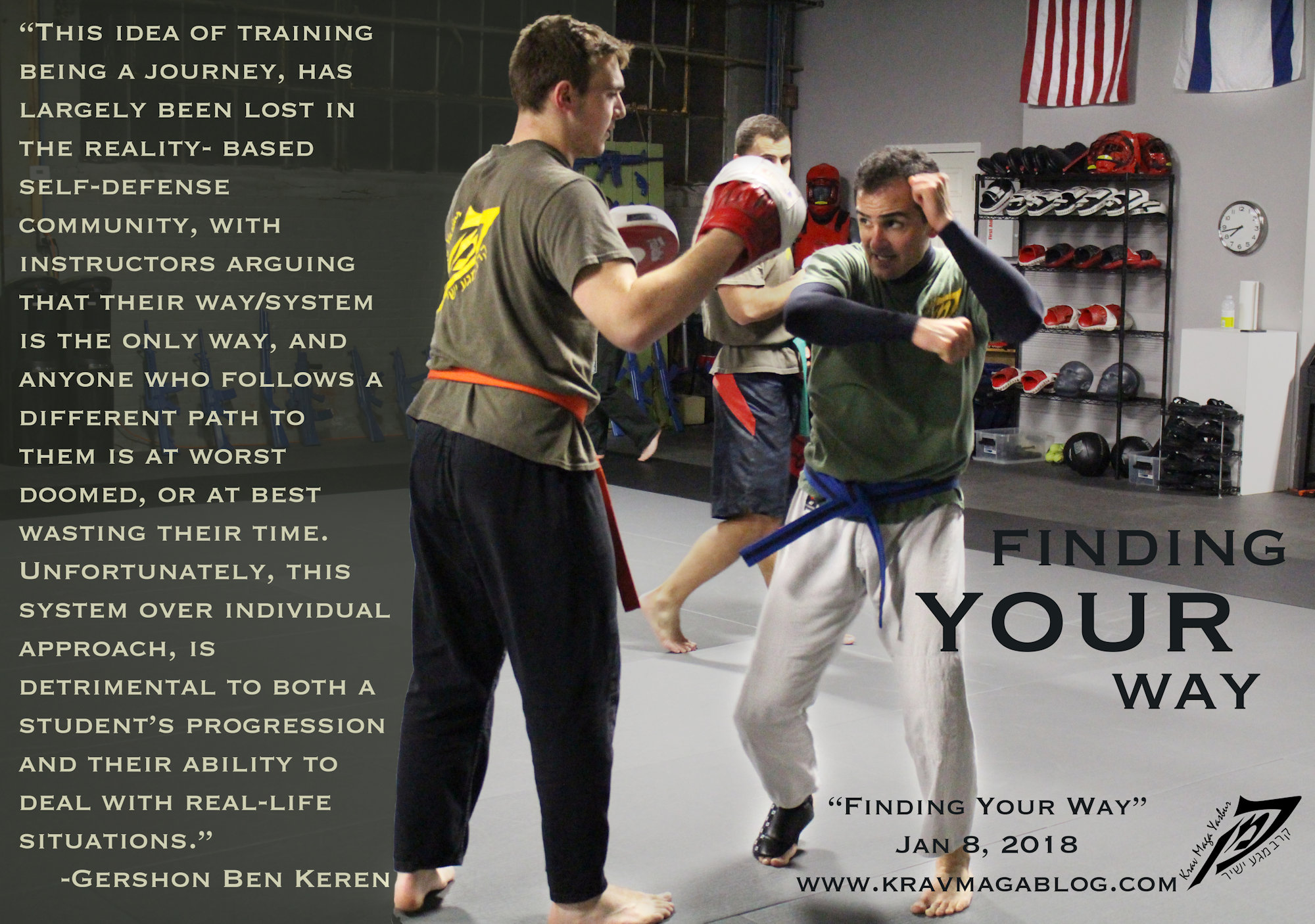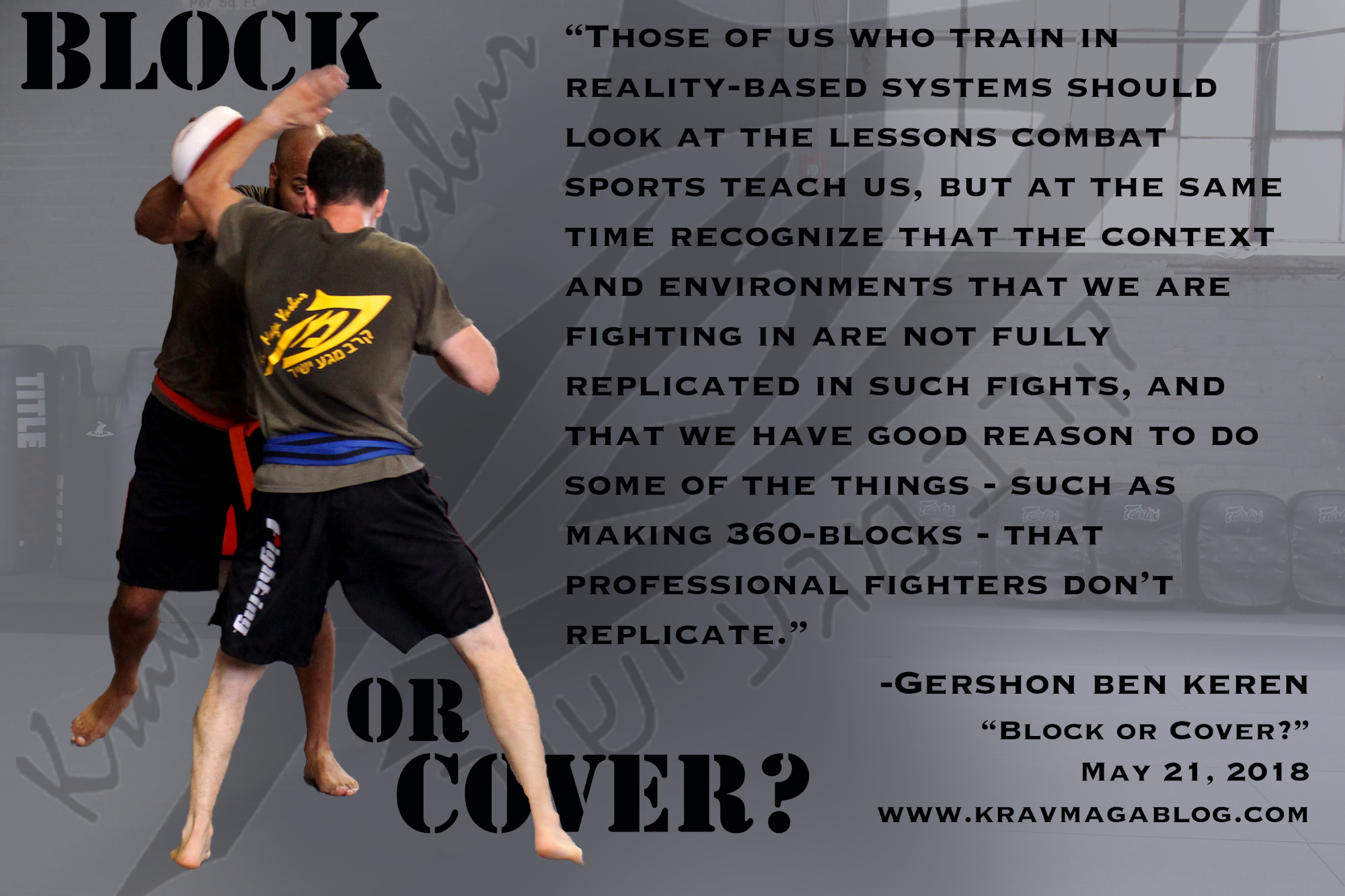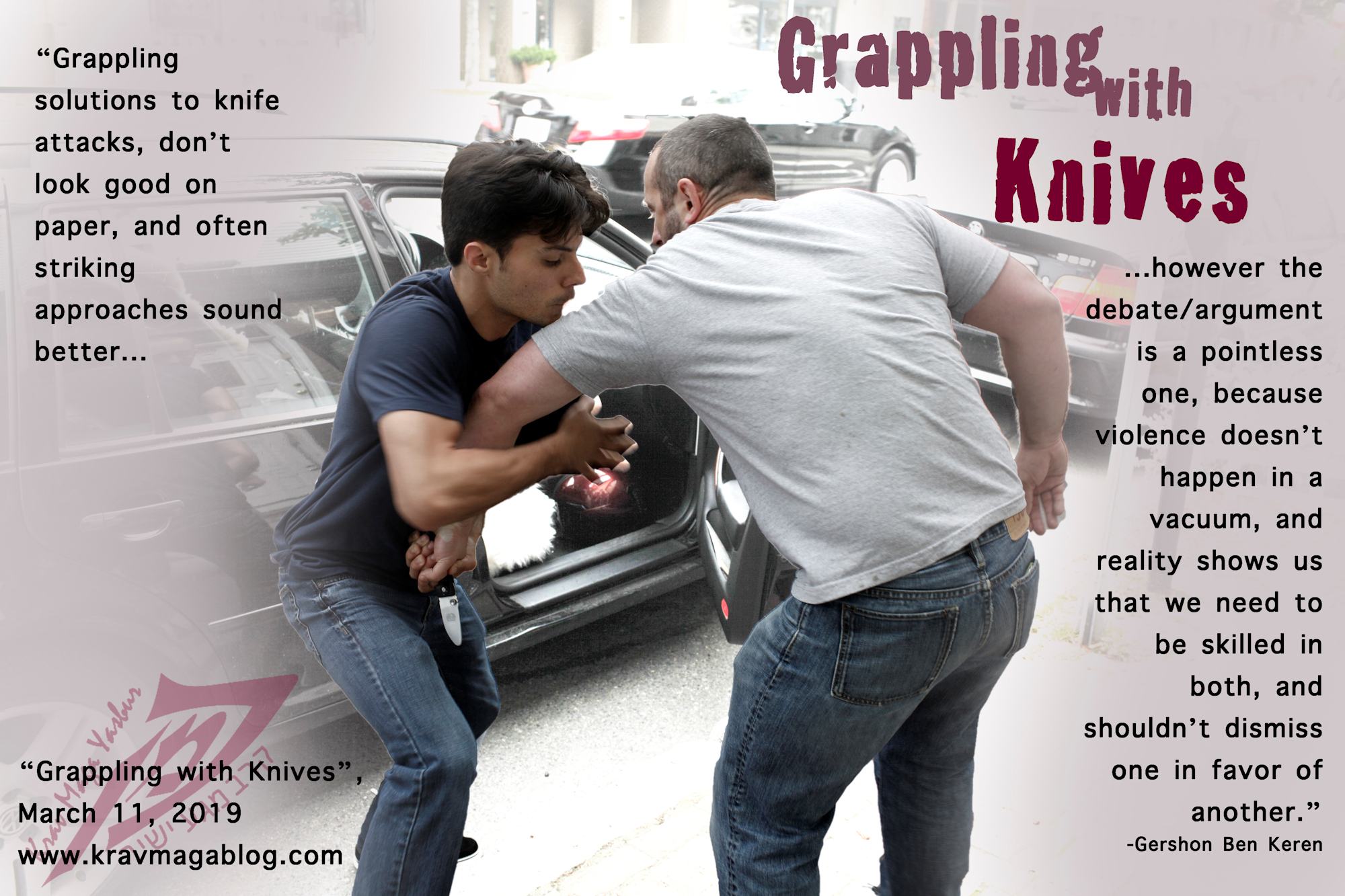Grappling with Knives, is an article written by Gershon Ben Keren, a 5th Degree Black Belt in Krav Maga, who teaches Krav Maga in Boston, MA. He has also authored three Amazon best-Selling Books on Krav Maga.
Not all knife attacks are or look the same. There is a big difference between an active killer running around a subway station, looking to stab as many people as possible and an individual (or group) engaged in recreational violence, looking to target an individual for their own entertainment purposes. The way an individual who feels threatened and/or disrespected may posture, presenting and showing the knife, before attacking with it, may be different to the way somebody in a state of psychosis uses a knife, etc. Range, distance, relative body positioning (is the attacker coming from the front, side or rear?), use of the non-weapon hand, etc., are all going to alter and change the nature of the attack; including the weapon itself – is it a box-cutter that is more effective at slashing rather than stabbing, and so is more likely to be used at a longer range, involving larger slicing arcs, than a short, fixed-bladed weapon that is better designed for stabbing at close range? Because of all of these variants, there cannot be one, universal solution for dealing with knife attacks – if one, universal solution is presented/trained then it is likely that all knife attacks are being presented in the same way e.g. such as an attacker, always making their attack from the same distance, not using their other hand to grab, push or pull with, etc. If we are to be successful at dealing with knife attacks, we must avoid clinging to absolute truths, such as always punching, always grappling, etc., and understand when/where these approaches and solutions are appropriate.
Some systems and approaches favor striking over grappling for dealing with knife attacks, and for certain types of attack, this is appropriate. If an assailant, initiates their attack from outside of striking range, you may have the time and distance, to block, control range, and punch/strike, etc. However, it should also be acknowledged that a knife is a short-range weapon, especially if it is going to be used to stab, and that on many occasions, it won’t be drawn until it is going to be used, meaning that an attacker is likely to be up close and personal, and inside the range where strikes and punches could generate enough power to keep/move the person back, and/or be such a significant distraction to the attacker that their attack will be interrupted, etc. Obviously, you can punch and strike at such a range, and if your assailant doesn’t have a weapon that you need to control, this might be something you can focus on, but at such a close proximity, especially if the environment impedes your movement, your primary attention needs to be on restricting and controlling the advance and retraction of the weapon arm, along with your assailant’s overall body movement. This means you are going to have to have some grappling skills and understanding to bring to the table, because you are now effectively wrestling with somebody who has a weapon – and if you’re unfortunate enough to go to the ground, you will need some ground-fighting skills, etc. This isn’t simply about “knowing” techniques, it’s about having actual grappling skills, as it is unlikely that you will be able to execute techniques precisely as you trained them. One reason for this is that the “starting” position you find yourself in, is unlikely to accurately reflect the moving, messy, ever-changing one(s) you now find yourself in, etc. Skills will always triumph over techniques, and the point of training techniques, is to develop skills, rather than to simply collect them and/or gain the head knowledge of what you “should” do, in the event of an attack.
Another reason that grappling skills are necessary, for being able to comprehensively deal with knife attacks, is due to the active nature of the assailant’s non-weapon arm/hand. This in some way shape or form is likely to be used to control, position and move you, in order to make your assailant’s cuts, stabs, and slashes more effective. If this is latched on to you in some way, such as holding onto your lapel in order to pull you onto the blade, you will need to know how to deal with the movement and action of being pulled forward, and also how to effectively deal with the lapel grab. I’ve always been grateful for my Judo training, for giving me the ability to think whilst being moved and unbalanced, and for teaching me how to deal with clothing grabs; both of which are grappling skills. In a situation, wherein you are being unbalanced as part of the attack, relying on striking is likely to be largely ineffective, and your focus will need to be on protecting yourself; if the arm position of your assailant prevents you from being able to control the weapon – they may be driving you backwards with their forearm across your throat, stopping you from reaching their attacking arm – you must look to controlling, and repositioning the person, so they are unable to continue their attack, and/or possibly break yourself away so that you can either disengage or deal with subsequent attacks at greater range/distance, where striking solutions may be effective, etc.
It is also worth training your grappling skills for dealing with knife attacks because your natural instinct is likely to be to try and protect yourself whilst trying to get control of the weapon arm – your natural reaction will not be to strike; this is not to say striking isn’t effective, doesn’t have it’s place, or may not, in certain situations be the optimal and preferred solution, but rather to acknowledge that even when we can strike and punch we may not do this, due to our focus on stopping the movement of the blade. There may be lots of things we “should” do in a fight that we won’t do for a myriad of reasons, including fear, lack of confidence in achieving the desired outcome, etc. Our natural desire to gain control of that which threatens our existence, means that we may find ourselves grappling with a knife attacker, even when we didn’t plan this to be one of our solutions – if that is the case, we will want to have the skills to back up this unconscious decision. It is also worth noting that if you do end up controlling the weapon arm, even if it is just with both hands clutching your attacker’s arm with a death-grip, there is little that will make you want to give up that control in order to start striking; so better to have the grappling skills to get a better control and end the fight from there.
We need to train a myriad of solutions, and develop an array of different skills, if we are to be able to comprehensively deal with knife attacks. Situations determine solutions not the other way around and we don’t get to manage and control every situation we are in. Grappling solutions to knife attacks, don’t look good on paper, and often striking approaches sound better, however the debate/argument is a pointless one, because violence doesn’t happen in a vacuum, and reality shows us that we need to be skilled in both, and shouldn’t dismiss one in favor of another.
0 COMMENTS















